|
|
|
Sort Order |
|
|
|
Items / Page
|
|
|
|
|
|
|
| Srl | Item |
| 1 |
ID:
102418
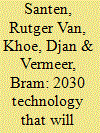

|
|
|
|
|
| Publication |
Oxford, Oxford University Press, 2010.
|
| Description |
vi, 295p.
|
| Standard Number |
9780195377170, hbk
|
|
|
|
|
|
|
|
|
|
|
|
Copies: C:1/I:0,R:0,Q:0
Circulation
| Accession# | Call# | Current Location | Status | Policy | Location |
| 055869 | 601.12/SAN 055869 | Main | On Shelf | General | |
|
|
|
|
| 2 |
ID:
138632


|
|
|
|
|
| Summary/Abstract |
This paper analyses the application of Bass’s diffusion model in forecasting the number of telecommunication services users in the event of natural disasters. Citizens’ behaviour has been modelled in the case of an emergency situation caused by an earthquake with high magnitude. We analysed the area of an administrative district in the south-west part of the Republic of Serbia which includes two cities and three municipalities. To control the consequences of natural disasters, a unit of the Army of Serbia with the required number of radio transceivers for establishing communication between the vulnerable population and rescuers with command staff at the observed territory has been dimensioned. Special emphasis is given to the provision of telecommunication support in the military assistance in a relief operation with civil authorities.
|
|
|
|
|
|
|
|
|
|
|
|
|
|
|
|
| 3 |
ID:
132093
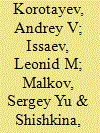

|
|
|
| 4 |
ID:
106178
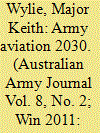

|
|
|
| 5 |
ID:
107723
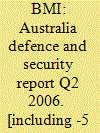

|
|
|
|
|
| Publication |
London, Business Monitor International, 2006.
|
| Description |
p.
|
| Series |
Part of BMI's Industry survey and forecasts series
|
|
|
|
|
|
|
|
|
|
|
|
Copies: C:1/I:0,R:0,Q:0
Circulation
| Accession# | Call# | Current Location | Status | Policy | Location |
| 051594 | 355.030994/BMI 051594 | Main | On Shelf | General | |
|
|
|
|
| 6 |
ID:
082894
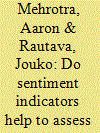

|
|
|
|
|
| Publication |
2008.
|
| Summary/Abstract |
This paper evaluates the usefulness of business sentiment indicators for forecasting developments in the Chinese real economy. We use data on diffusion indices collected by the People's Bank of China for forecasting industrial production, retail sales and exports. Our bivariate vector autoregressive models, each composed of one diffusion index and one real sector variable, generally outperform univariate autoregressive models in forecasting one to four quarters ahead. Similarly, principal components analysis, combining information from various diffusion indices, leads to enhanced forecasting performance. Our results indicate that Chinese business sentiment indicators convey useful information about current and future developments in the real economy. Moreover, the results could be seen as support for the reliability of the official data on the real economy, as both survey and real sector data seem to reflect the same underlying economic dynamics.
|
|
|
|
|
|
|
|
|
|
|
|
|
|
|
|
| 7 |
ID:
152298


|
|
|
|
|
| Summary/Abstract |
Increasingly, scholars interested in understanding conflict processes have turned to evaluating out-of-sample forecasts to judge and compare the usefulness of their models. Research in this vein has made significant progress in identifying and avoiding the problem of overfitting sample data. Yet there has been less research providing strategies and tools to practically improve the out-of-sample performance of existing models and connect forecasting improvement to the goal of theory development in conflict studies. In this article, we fill this void by building on lessons from machine learning research. We highlight a set of iterative tasks, which David Blei terms ‘Box’s loop’, that can be summarized as build, compute, critique, and think. While the initial steps of Box’s loop will be familiar to researchers, the underutilized process of model criticism allows researchers to iteratively learn more useful representations of the data generation process from the discrepancies between the trained model and held-out data. To benefit from iterative model criticism, we advise researchers not only to split their available data into separate training and test sets, but also sample from their training data to allow for iterative model development, as is common in machine learning applications. Since practical tools for model criticism in particular are underdeveloped, we also provide software for new visualizations that build upon already existing tools. We use models of civil war onset to provide an illustration of how our machine learning-inspired research design can simultaneously improve out-of-sample forecasting performance and identify useful theoretical contributions. We believe these research strategies can complement existing designs to accelerate innovations across conflict processes.
|
|
|
|
|
|
|
|
|
|
|
|
|
|
|
|
| 8 |
ID:
043837


|
|
|
|
|
| Publication |
Oxford, Pergamon Press, 1970.
|
| Description |
xi, 347p.Hbk
|
| Contents |
Including Bibliography.
|
| Standard Number |
08015512X
|
|
|
|
|
|
|
|
|
|
|
|
Copies: C:1/I:0,R:0,Q:0
Circulation
| Accession# | Call# | Current Location | Status | Policy | Location |
| 004914 | 658.4012/WAR 004914 | Main | On Shelf | General | |
|
|
|
|
| 9 |
ID:
082403
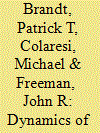

|
|
|
|
|
| Publication |
2008.
|
| Summary/Abstract |
Do public opinion dynamics play an important role in understanding conflict trajectories between democratic governments and other rival groups? The authors interpret several theories of opinion dynamics as competing clusters of contemporaneous causal links connoting reciprocity, accountability, and credibility. They translate these clusters into four distinct Bayesian structural time series models fit to events data from the Israeli-Palestinian conflict with variables for U.S. intervention and Jewish public opinion about prospects for peace. A credibility model, allowing Jewish public opinion to influence U.S., Palestinian, and Israeli behavior within a given month, fits best. More pacific Israeli opinion leads to more immediate Palestinian hostility toward Israelis. This response's direction suggests a negative feedback mechanism in which low-level conflict is maintained and momentum toward either all-out war or dramatic peace is slowed. In addition, a forecasting model including Jewish public opinion is shown to forecast ex ante better than a model without this variable
|
|
|
|
|
|
|
|
|
|
|
|
|
|
|
|
| 10 |
ID:
101503
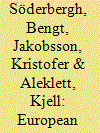

|
|
|
|
|
| Publication |
2010.
|
| Summary/Abstract |
The widening gap between EU gas production and consumption may require an 87% increase of import volumes between 2006 and 2030, and there are great uncertainties regarding the amounts of gas that can be expected from new suppliers. The potential of increased production from Norway and Algeria is limited; hence, Russia is likely to play a crucial part of meeting the anticipated growing gas demand of the EU. A field-by-field study of 83 giant gas fields shows that the major producing Russian gas fields are in decline, and by 2013 much larger supplies from the Yamal Peninsula and the Shtokman field will be needed in order to avoid a decline in production. Gas from fields in Eastern Siberia and the Far East will mainly be directed to the Asian and Pacific Rim markets, thereby limiting its relevance to the European and CIS markets. As a result, the maximum export increase to the European and CIS markets amounts only to about 45% for the period 2015-2030. The discourse surrounding the EU's dependence on Russian gas should thus not only be concerned with geopolitics, but also with the issue of resource limitations.
|
|
|
|
|
|
|
|
|
|
|
|
|
|
|
|
| 11 |
ID:
152301
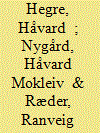

|
|
|
|
|
| Summary/Abstract |
Several studies show that internal armed conflict breeds conflict by exacerbating conditions that increase the chances of war breaking out again. Empirically, this ‘conflict trap’ works through four pathways: conflicts increase the likelihood of continuation, recurrence, escalation, and diffusion of conflict. Past empirical studies have underestimated the scope and intensity of the conflict trap since they consider the impact of conflict only through one of these pathways and rarely across sufficiently long time periods. This article shows that simulation and forecasting techniques are useful and indeed necessary to quantify the total, aggregated effect of the conflict trap, over long time periods and across countries. We develop a country-year statistical model that allows estimating the probability of no conflict, minor conflict, and major conflict, and the probabilities of transition between these states. A set of variables denoting the immediate and more distant conflict history of the country are used as endogenous predictors in the simulated forecasts. Another set of variables shown to be robustly associated with armed conflict are treated as exogenous predictors. We show that the conflict trap is even more severe than earlier studies have indicated. For instance, if a large low-income country with no previous conflicts is simulated to have two to three years of conflict over the 2015–18 period, we find that it will have nine more years of conflict over the 2019–40 period than if peace holds up to 2018. Conversely, if a large low-income country that has had major conflict with more than 1,000 battle-related deaths in several of the past ten years succeeds in containing violence to minor conflict over the 2015–18 period, we find that it will experience five fewer years of conflict in the subsequent 20 years than if violence continues unabated.
|
|
|
|
|
|
|
|
|
|
|
|
|
|
|
|
| 12 |
ID:
103397


|
|
|
|
|
| Publication |
2011.
|
| Summary/Abstract |
It is generally recognised that the primary tools being utilised today for hydrogen energy forecasting and policy development take a least-cost approach. While useful for comparing the viability of different technologies from a cost perspective, it is argued that these models fail to capture the potential value contribution such technologies could offer companies and, in consequence, the likelihood of their receiving investment. The authors propose a novel model for forecasting the deployment of hydrogen energy systems based on a company value maximisation approach designed to assist governments in the development of appropriate policy instruments. In this paper a theoretical relationship between market sector valuations and investment activity is presented using 3 value metrics, namely net present value (NPV), earnings per share (EPS) and sum of the parts (SOP). It is shown that, as the electricity and transport fuel markets begin to converge, examination of the effects of different policy measures through the value-led model can highlight otherwise hidden counter incentives. The model further recognises that the propensity to invest in hydrogen differs according to the characteristics of the company looking to make the investment and the implications for policy-makers regarding levels of support are also discussed in the paper.
|
|
|
|
|
|
|
|
|
|
|
|
|
|
|
|
| 13 |
ID:
080393
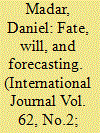

|
|
|
| 14 |
ID:
152299
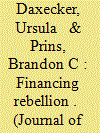

|
|
|
|
|
| Summary/Abstract |
A prominent explanation of the resource–conflict relationship suggests that natural resources finance rebellion by permitting rebel leaders the opportunity to purchase weapons, fighters, and local support. The bunkering of oil in the Niger Delta by quasi-criminal syndicates is an example of how the black-market selling of stolen oil may help finance anti-state groups. More systematic assessments have also shown that the risk and duration of conflict increases in the proximity of oil and diamond deposits. Yet despite the emphasis on rebel resource extraction in these arguments, empirical assessments rely almost exclusively on latent resource availability rather than actual resource extraction. Focusing on maritime piracy, this article argues that piracy is a funding strategy neglected in current research. Anecdotal evidence connects piracy in the Greater Gulf of Aden to arms trafficking, the drug trade, and human slavery. The revenue from attacks may find its way to Al-Shabaab. In Nigeria, increasing attacks against oil transports may signal an effort by insurgents to use the profits from piracy as an additional revenue stream to fund their campaign against the Nigerian government. The article hypothesizes that piracy incidents, that is, actual acts of looting, increase the intensity of civil conflict. Using inferential statistics and predictive assessments, our evidence from conflicts in coastal African and Southeast Asian states from 1993 to 2010 shows that maritime piracy increases conflict intensity, and that the inclusion of dynamic factors helps improve the predictive performance of empirical models of conflict events in in-sample and out-of-sample forecasts.
|
|
|
|
|
|
|
|
|
|
|
|
|
|
|
|
| 15 |
ID:
175342
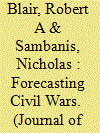

|
|
|
|
|
| Summary/Abstract |
Does theory contribute to forecasting accuracy? We use event data to show that a parsimonious model grounded in prominent theories of conflict escalation can forecast civil war onset with high accuracy and over shorter temporal windows than has generally been possible. Our forecasting model draws on “procedural” variables, building on insights from the contentious politics literature. We show that a procedural model outperforms more inductive, atheoretical alternatives and also outperforms models based on countries’ structural characteristics, which previously dominated models of civil war onset. We find that process can substitute for structure over short forecasting windows. We also find a more direct connection between theory and forecasting than is sometimes assumed, though we suggest that future researchers treat the value-added of theory for prediction not as an assumption but rather as a hypothesis to test.
|
|
|
|
|
|
|
|
|
|
|
|
|
|
|
|
| 16 |
ID:
141821
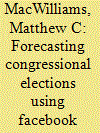

|
|
|
|
|
| Summary/Abstract |
Facebook constantly tracks the growth of each congressional candidate’s fan base and the number of people engaging with candidates online. These Facebook metrics comprise a rich dataset that theoretically may capture the effectiveness of campaigns in building participatory support as well as their potential to mobilize support. When added to electoral fundamentals similar to those used in national-election forecasting, can Facebook data be used to develop a reliable model for predicting vote-percentage outcomes of individual congressional contests? The results of an exploratory investigation reveal that fan participation and mobilization metrics tracked by Facebook produced surprisingly accurate election predictions in the 2012 US Senate races studied. The question remains, however, whether these results are a “flash in the 2012 pan” or an indication that using Facebook statistics to measure campaign effectiveness is a new tool that scholars can use to forecast the outcome of congressional campaigns.
|
|
|
|
|
|
|
|
|
|
|
|
|
|
|
|
| 17 |
ID:
179142
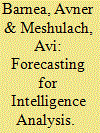

|
|
|
|
|
| Summary/Abstract |
A successful strategic surprise, whether in the military or business sector, can have critical significance both for the initiating organization (the “attacker”) and the organization under attack (“the victim”). In the military sector, the attack can disrupt the victim’s strategic organization, inflict untold damage, foil its ability to protect itself and to react, and even determine the outcome of the battle. For example, the sudden strike that the Germans unleashed on the USSR in Operation Barbarossa (1941) disrupted the USSR’s defense systems, dealt the Russian soldiers a fatal blow, and greatly expedited Germany’s huge land invasion of the USSR. It took the USSR two to three years to recover and rebuild to the level where it could challenge the German powerhouse. The attack on Pearl Harbor in 1941 had the same destructive effect on U.S. forces in a single day.
|
|
|
|
|
|
|
|
|
|
|
|
|
|
|
|
| 18 |
ID:
152293
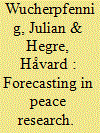

|
|
|
|
|
| Summary/Abstract |
Prediction and forecasting have now fully reached peace and conflict research. We define forecasting as predictions about unrealized outcomes given model estimates from realized data, and predictions more generally as the assignment of probability distributions to realized or unrealized outcomes. Increasingly, scholars present within- and out-of-sample prediction results in their publications and sometimes even forecasts for unrealized, future outcomes. The articles in this special issue demonstrate the ability of current approaches to forecast events of interest and contributes to the formulation of best practices for forecasting within peace research. We highlight the role of forecasting for theory evaluation and as a bridge between academics and policymakers, summarize the contributions in the special issue, and provide some thoughts on how research on forecasting in peace research should proceed. We suggest some best practices, noting the importance of theory development, interpretability of models, replicability of results, and data collection.
|
|
|
|
|
|
|
|
|
|
|
|
|
|
|
|
| 19 |
ID:
054469
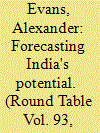

|
|
|
| 20 |
ID:
121787
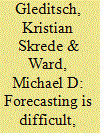

|
|
|
|
|
| Publication |
2013.
|
| Summary/Abstract |
Prediction is an important goal in the study of international conflict, but a large body of research has found that existing statistical models generally have disappointing predictive abilities. We show that most efforts build on models unlikely to be helpful for prediction. Many models essentially ignore the origins of conflict; studies look either at invariant structural features believed to affect the opportunities of conflict, or at factors that are believed to reduce the baseline risk of conflict, without attempting to identify the potential motivations and contentious issues over which conflicts typically arise. Researchers that have considered how contentious issues may motivate conflict and how these can be managed, using the Issues Correlates of War (ICOW) data, have not considered how these features may inform prediction. We assess the risk of dyadic interstate conflict based on the presence of specific contentious issues and conflict management events that may change the conflict potential of these contentious issues. We evaluate to what extent incorporating contentious issues and conflict management can help improve out-of-sample forecasting, as well as advance our understanding of conflict dynamics. Our results provide strong support for the idea that taking into account contentious issues can inform and improve out-of-sample forecasting.
|
|
|
|
|
|
|
|
|
|
|
|
|
|
|
|
|
|
|
|
|